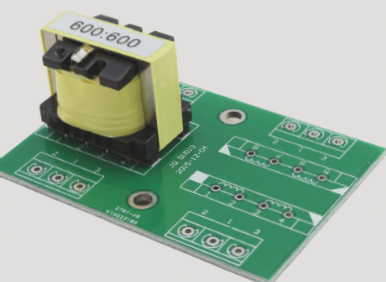1. Generally speaking, PCB components carrying various electronic components must undergo a soldering process during the electronic assembly phase.
2. Wave soldering is a well-known and commonly used soldering method.
3. When PCB components switch to lead-free wave soldering, they encounter numerous challenges.
4. Just like any new manufacturing technology entering product production, preliminary estimates of various related challenges are often made, and preparations are undertaken in advance.
5. However, some challenges are not foreseeable, and related issues may only become apparent after the product enters mass production, at which point sufficient data can be gathered to address these problems.
6. Therefore, engineers frequently engage in continuous learning, drawing lessons and experience from the ongoing production process.
7. In fact, the lead-free assembly process is not an entirely novel technology.

1. Lead-free wave soldering has been utilized for many years. Prior to the implementation of RoHS regulations, electronic assembly engineers often faced the challenge of higher soldering temperatures due to the higher melting point of silver-tin solder.
2. These electronic components are engineered to withstand harsh environments, and their relatively simple design ensures acceptable performance. With the introduction of RoHS regulations into mainstream electronics, the transition for early products, including consumer electronics, has been relatively straightforward.
3. Using single-sided or double-sided PCB components, less complex SMT devices are employed on the PCB soldering surface. The transition to lead-free components has generally been smooth, requiring minimal changes to the process parameters originally set for tin-lead alloys. In many instances, even basic solders compatible with tin-lead alloys work effectively in lead-free processes.
4. Over the years, research has shown that with lead-free soldering, a 1.6mm thick PCB may face a slightly tighter process window. The change in preheating requirements is minimal, and most current soldering equipment can accommodate these changes. Soldering temperatures might need to be higher compared to those used with tin-lead alloys. Fully filling holes with lead-free solder can be challenging, especially for products with OSP surface coating. The pause time in wave soldering may range from one to over two seconds. Managing drainage or reducing bridging with lead-free alloys is more difficult than with tin-lead alloys, potentially causing issues for fine-pitch devices.
5. For less complex components, most challenges can be addressed by adjusting process parameters and using fundamental process control techniques.
6. As thicker PCBs with more layers and complex electronic components, such as program-controlled switches, transition from tin-lead to lead-free soldering, the differences in process operations between tin-lead and lead-free alloys become more pronounced.
2. Wave soldering is a well-known and commonly used soldering method.
3. When PCB components switch to lead-free wave soldering, they encounter numerous challenges.
4. Just like any new manufacturing technology entering product production, preliminary estimates of various related challenges are often made, and preparations are undertaken in advance.
5. However, some challenges are not foreseeable, and related issues may only become apparent after the product enters mass production, at which point sufficient data can be gathered to address these problems.
6. Therefore, engineers frequently engage in continuous learning, drawing lessons and experience from the ongoing production process.
7. In fact, the lead-free assembly process is not an entirely novel technology.

1. Lead-free wave soldering has been utilized for many years. Prior to the implementation of RoHS regulations, electronic assembly engineers often faced the challenge of higher soldering temperatures due to the higher melting point of silver-tin solder.
2. These electronic components are engineered to withstand harsh environments, and their relatively simple design ensures acceptable performance. With the introduction of RoHS regulations into mainstream electronics, the transition for early products, including consumer electronics, has been relatively straightforward.
3. Using single-sided or double-sided PCB components, less complex SMT devices are employed on the PCB soldering surface. The transition to lead-free components has generally been smooth, requiring minimal changes to the process parameters originally set for tin-lead alloys. In many instances, even basic solders compatible with tin-lead alloys work effectively in lead-free processes.
4. Over the years, research has shown that with lead-free soldering, a 1.6mm thick PCB may face a slightly tighter process window. The change in preheating requirements is minimal, and most current soldering equipment can accommodate these changes. Soldering temperatures might need to be higher compared to those used with tin-lead alloys. Fully filling holes with lead-free solder can be challenging, especially for products with OSP surface coating. The pause time in wave soldering may range from one to over two seconds. Managing drainage or reducing bridging with lead-free alloys is more difficult than with tin-lead alloys, potentially causing issues for fine-pitch devices.
5. For less complex components, most challenges can be addressed by adjusting process parameters and using fundamental process control techniques.
6. As thicker PCBs with more layers and complex electronic components, such as program-controlled switches, transition from tin-lead to lead-free soldering, the differences in process operations between tin-lead and lead-free alloys become more pronounced.



